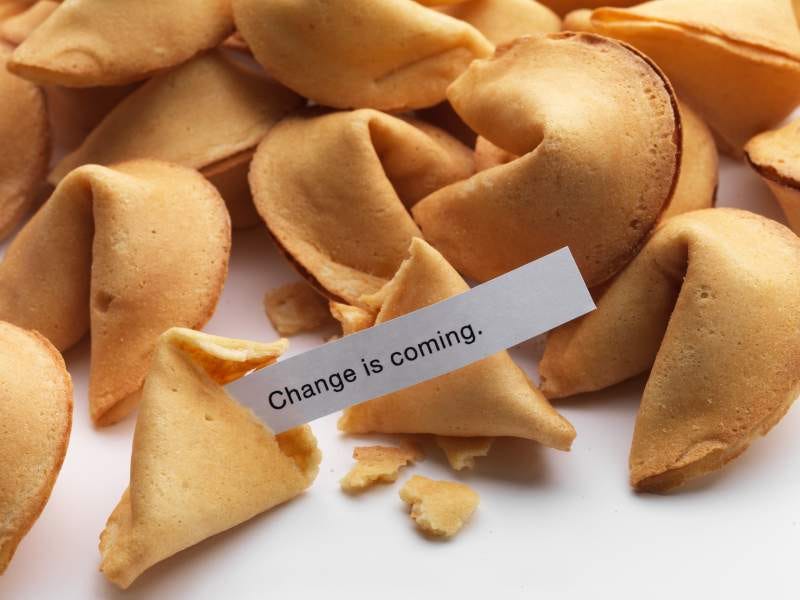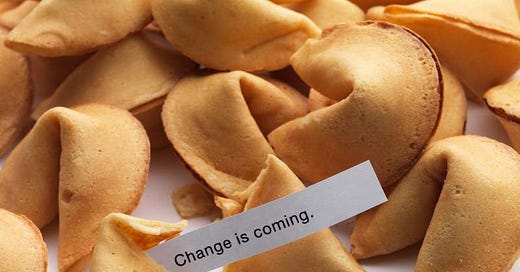Successful Launches In The Past Don’t Make You Innovative Today

Editor's Note: This is a guest post by Marissa Bracke.
Just because people are buying your stuff doesn't mean your tactics are effective. Sometimes it's just a lack of alternatives.
As an (admittedly oversimplified) example of this idea, look at the airline industry. The airlines make a lot of money. So if we assume that makings lots of money means everything's working fine, then the airline industry is working fine. People are actively dissatisfied with the airlines, yet they continue to buy from them. Does that mean that it's safe to dismiss all customer dissatisfaction with the major airlines? Of course not. It means that travelers don't have readily accessible alternatives outside of the major airlines. The airline industry continues making loads of cash because customers lack alternatives.
Similarly, in the sphere of creative entrepreneurs and the information products that target them as potential buyers, there is a noticeable lack of alternatives when it comes to product sales and launch tactics. You can tell what product launch formula is "The Right One" at any given time because it feels like everyone's using it.
This means that if a consumer wants to buy information products from the Big Kahuna in this particular sphere, he has to buy them through those tactics, regardless of his level of satisfaction with those tactics. It's not as though he can put his money toward the Big Name who's selling the same information products using a radically different formula (there usually won't be anyone using a radically different formula, for reasons discussed below). If the customer wants the info products, he has to support that year's ubiquitous tactics, because that's the only option he's got.
So what? Money exchanges hands, all's well, nothing's broke that needs fixing... right?
Not really. Succeeding based on an audience's lack of accessible alternatives isn't the same as positioning yourself for sustainable success. You put yourself in the precarious position of maintaining your success only so long as no viable alternatives hit the market. If someone starts experimenting with alternative tactics that prove successful, the entrepreneurs whose customers support their tactics only (or largely) due to lack of alternatives are likely to see their bottom line take a hit.
Why We Avoid Tactical Innovation
If all of this is true, why don't more of us do something different? Especially in a sphere where stepping outside the common template and working beyond the status quo is not only accepted but valued, why is there a reluctance to innovate with our tactics?
Because it's risky. It's riskier than following the accepted formula.
To innovate with product sales formulas--especially big launches--would be to take a big risk. Any time you do something truly innovative, you risk some trial and error. You risk losing time and money. Perhaps worst of all, you risk losing face. If we go against the accepted grain of "This Is What Works" and the new strategy doesn't pan out, we risk eating some crow, and for most of us, that's reason enough to color within the established lines.
In other words, it's much safer, far less risky, to stick to the oft-used paths when it comes to tactics than it is to do something different. That's why when it comes to launch tactics, you're more likely to see the ideas of "take lots of risks" and "fail soon and fail fast" in the information product being sold than in the tactics used to sell it.
(Getting it wrong is, of course, part of the process of getting it right. It's just a lot safer to let someone else work through that part of things than to do it ourselves.)
Why You Can't Afford to Disregard Customer Preferences or Discontent
All of the tactics currently used and viewed as The Right Way were, at one time, new and risky innovations. Someone was the first person to use a series of videos to launch a product rather than a long sales page, and when that person did it for the first time, a lot of people were convinced it was an awful idea that customers would never respond to because it was too far outside the established template. Now everyone launches that way. It's been this year's ubiquitous launch tactic because it works really well.
There were many reasons why the "series of videos" formula gained popularity so fast (highly shareable on social media, lots of value in each video that build trust in the seller, etc.). But one of the reasons consumers responded strongly (and favorably) to that tactic was because they were really tired of the long salespage formula. Consumer boredom and dissatisfaction with the old product launch tactic was certainly not the sole reason a new tactic succeeded--but it was a factor.
If your customers grow dissatisfied with your tactics but you dismiss their dissatisfaction on the grounds that you're still making money, you're liable to lose those customers as soon as someone else comes up with a tactic they like better. It's important to remember that none of us is creating something so revolutionary that no one else has ever or will ever do the same thing.
How we engage with our audience (which includes how we listen and respond to their concerns and preferences) is a big part of what sets us apart from others doing similar work.
The Cost of Innovation Versus the Cost of Ignoring Its Inevitability
The fact that you made loads of cash on your last launch doesn't mean your tactics don't need to be reviewed or that some innovation won't keep you ahead of the game. The fact that your current formulas are still profitable doesn't automatically mean your customers aren't discontented. (Even the fact that they like the content you sell them doesn't automatically negate their discontent.) We simply cannot afford to base our evaluation of what "works" on money alone. Doing so is inherently backward-looking.
Your last launch's profit isn't anything to ignore, but it's also not by itself proof that your business is on the right path for continued success.
There is a cost to innovation, to stepping outside the established template and to being the first to try something different. But the cost to ignoring the inevitability of innovation, and to using past profits as your sole indicator of customer loyalty is much higher.
About the Author: Marissa Bracke helps people engage with their Right People in an effective and resonant way. She's also a long-standing member of Team PF. Find out more about her by visiting MarissaBracke.com.




